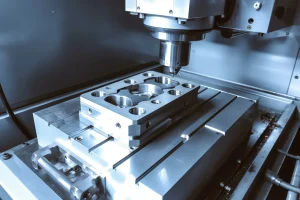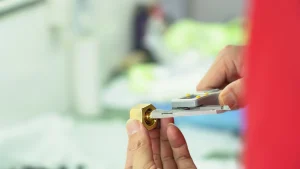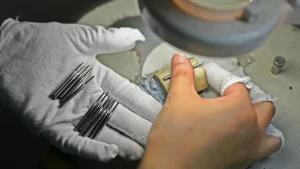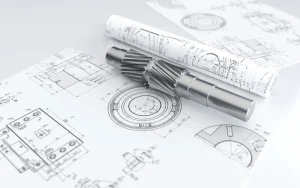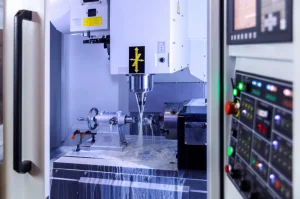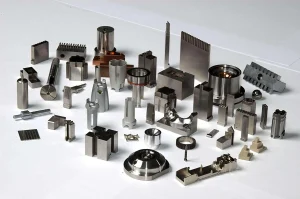Imagine a high-speed car suddenly spiraling out of control due to a tiny dimensional deviation in a critical steering component; Or a brand new engine is scrapped due to premature wear and scrap due to insufficient internal finish on the block. These are not alarmist, the processing accuracy and reliability of auto parts are directly related to driving safety and vehicle life. In today’s pursuit of ultimate performance and safety,CNC (Computer Numerical Control) machining technology has become an indispensable precision engine in the automobile manufacturing industry, driving every evolution from traditional fuel vehicles to new energy vehicles.
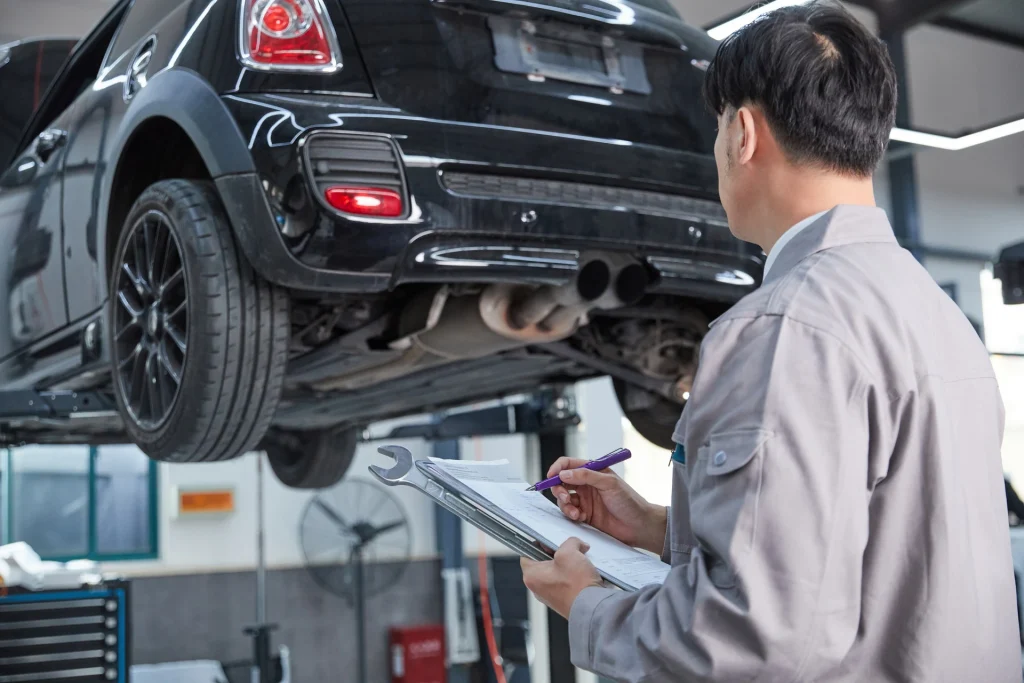
CNC: The Cornerstone of Precision in Automotive Parts Machining
At the heart of CNC machining lies itsunparalleled control over precision. With pre-programmed digital instructions, CNC machines are able to repeatedly perform complex machining tasks with an accuracy of 0.005 mm or even better. This is crucial for automotive core components:
Engine heart: Cylinder block, cylinder head, crankshaft, camshaft, etc., its complex oil channel, waterway, bearing hole position, etc., has extremely strict requirements for dimensional tolerance, roundness, cylindricality, and position. CNC multi-axis linkage (such as a five-axis machining center) can complete multi-faceted precision machining at one time, ensuring that each component is tightly stitched, powerful, durable and reliable.
Transmission lifeline: The meshing accuracy of gearbox housings, gears, transmission shafts, etc., directly affects power transmission efficiency and noise levels. CNC can stably process high-precision gear tooth shapes, splines and bearing positions to ensure smooth shifting and lossless power transmission.
Chassis and Safety: Chassis and safety components such as steering knuckles, control arms, brake calipers, and ABS valve bodies withstand significant dynamic loads. CNC machining ensures that its structural strength, dimensions of key stressed parts, and shape and position tolerances (such as flatness and verticality) are foolproof, providing a solid foundation for driving stability and emergency braking efficiency.
Five Core Advantages of CNC Empowering Automotive Manufacturing
1.Conqueror of complex geometries: Modern automotive design pursues lightweight and performance optimization, and the structure of parts is becoming increasingly complex (such as topology optimization structure, integrated design). With its multi-axis linkage capabilities, CNC can efficiently process free-form surfaces, deep cavities, special-shaped holes, etc. that are difficult to achieve with traditional methods, and accurately transform designers’ blueprints into physical objects.
2.Ensuring Consistency and Efficiency: Once the program is verified, CNC machines can consistently produce parts with a high degree of consistent quality 24 hours a day. It greatly reduces human error, significantly improves production efficiency and yield rate, and meets the large-scale and fast-paced production needs of the automotive industry.
3.The King of Material Adaptability: From traditional cast iron and alloy steel, to high-strength aluminum alloys and magnesium alloys under the lightweight trend, to special composite materials in new energy vehicles, CNC can achieve efficient and high-quality machining by adjusting tools, cutting parameters (rotational speed, feed, cutting depth), and cooling methods.
4.Agile Tool for Quick Response: Compared to traditional production lines that require a large number of specialized tooling, CNC machining has significant advantages when dealing with design changes or small-batch trial production. By simply modifying the machining program, you can quickly switch between different parts, greatly shortening the time-to-market and adapting to the rapid iteration of the automotive industry.
5.Surface Integrity and Performance Enhancement: By finely controlling cutting parameters and selecting suitable tools, CNC not only ensures dimensional accuracy but also achieves excellent surface finish (Ra values can be as low as 0.4μm or even lower) and ideal surface residual stress states. This is essential for reducing frictional wear, improving fatigue strength (e.g., critical shaft components), and ensuring sealing performance (e.g., engine block planes).
Future Trends: Intelligence and Integration
The transformation of the automotive industry (electrification, intelligence, networking, sharing) is profoundly impacting parts processing:
New demand for new energy vehicle drives: The demand for electric vehicle exclusive parts such as motor housings, battery trays/end plates, and power electronic radiators has surged. These parts are often large in size, complex in structure (such as cooling runners), high precision requirements, and mostly made of aluminum alloys. Large gantry CNC, high-speed machining centers and five-axis machining centers became the main forces. The strict requirements for sealing and explosion-proof battery trays highlight the value of CNC precision machining.
Cell Units of Smart Factories: CNC machines are the core equipment of flexible automated production lines (FMS) and smart factories. By integrating automated loading and unloading (manipulator/AGV), online inspection (probe, machine vision), data acquisition (IoT) and central control system (MES), the CNC unit realizes “unmanned” production, real-time monitoring and quality traceability, and improves the overall manufacturing intelligence level.
Composite machining with multiple functions: Turning and milling composite machining centers are becoming increasingly popular, which can complete various processes such as turning, milling, drilling, and tapping in a single clamping. This not only reduces clamping errors, improves the overall accuracy of the part (especially positional accuracy), but also greatly shortens the machining process and improves efficiency.
Epilogue
CNC machining has long gone beyond the simple category of “metal cutting”, it is the cornerstone of precision manufacturing in the modern automotive industry to achieve the goals of high performance, high safety and high reliability. From the surging power of the engine to the precise control of the steering system, from the stable support of the chassis suspension to the safety protection of the brake system, it is inseparable from the precise support of CNC technology. As automobiles gallop in the direction of electrification, intelligence, and lightweight, CNC machining technology will continue to evolve on the road of higher precision, stronger intelligence, and better integration, becoming an indispensable precision engine driving future automotive innovation. Choosing a partner with advanced CNC machining capabilities is a key step for car companies to win the future in the fierce competition.

